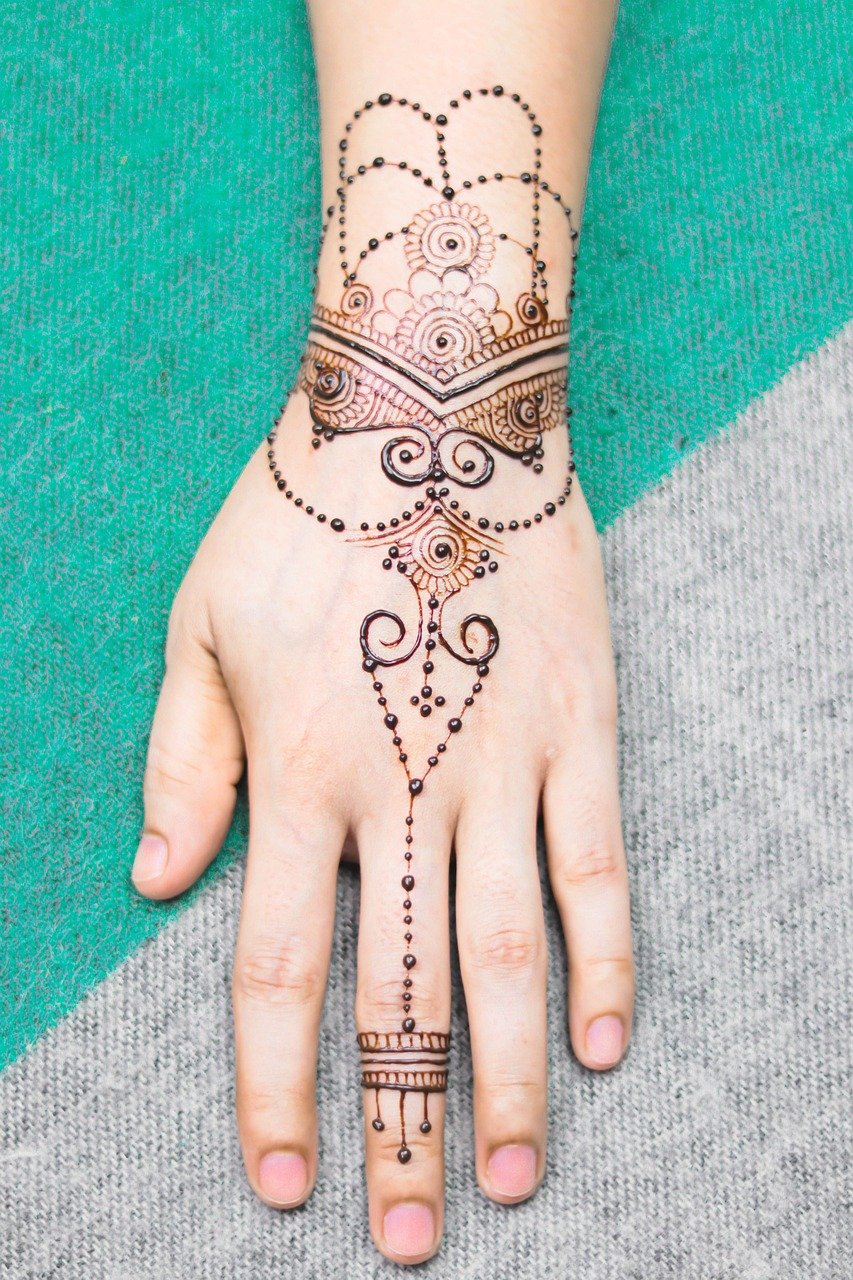
Arabic Mehndi Design: A Graceful Blend of Art and Tradition
Top 20 Arabic Mehndi Design, also known as henna, is one of the oldest forms of body art, cherished for centuries across cultures, especially in South Asia, the Middle East, and North Africa. Among the various styles of Mehndi, Arabic Mehndi Design has gained widespread popularity due to its elegance, simplicity, and stunning visual appeal. Known for its bold floral patterns, flowing lines, and minimalistic detailing, Arabic Mehndi is a preferred choice for women during weddings, festivals, and religious events like Eid.

This article explores the beauty, features, cultural significance, and modern trends of Arabic Mehndi design, making it a perfect read for anyone passionate about this timeless art.
Origins and Cultural Significance
Arabic Mehndi design traces its roots back to the Arabian Peninsula. In ancient times, henna was used not only for its decorative purpose but also for its cooling and medicinal properties. Over the centuries, the practice of applying henna evolved into a cultural tradition, especially among women during celebrations. Today, Arabic Mehndi has become a significant part of wedding ceremonies, religious festivals, and social gatherings, where it symbolizes beauty, joy, and good luck.

Unlike the dense and intricate Indian or Pakistani Mehndi styles that often cover entire hands and arms, Arabic designs are more spaced out, leaving portions of the skin exposed. This distinct style enhances the beauty of the hands and feet with a less crowded, more graceful look.

Key Features of Arabic Mehndi Designs
Arabic Mehndi designs are admired for their unique style, which sets them apart from other regional variations. Here are some defining features:

1. Bold Outlines
Arabic designs feature thick and bold outlines that define the shape of the patterns. These strong lines not only make the design visually striking but also help in quick application.

2. Floral and Leafy Motifs
One of the hallmarks of Arabic Mehndi is its use of floral and leafy motifs. Flowers, vines, petals, and paisley shapes are arranged in flowing, asymmetrical patterns, often starting from one corner of the hand and stretching diagonally.

3. Diagonal Flow
Most Arabic designs follow a diagonal layout across the palm or the back of the hand. This style adds an artistic balance and allows the design to look elegant even if it covers only part of the skin.

4. Spaced Patterns
Unlike Indian designs that are heavily filled, Arabic Mehndi leaves plenty of open spaces. This not only gives the design a cleaner look but also highlights the actual patterns, making them stand out more prominently.

5. Quick Application
Due to their open design and less intricate detailing, Arabic Mehndi patterns are quicker to apply. This makes them an ideal choice for last-minute events or those who prefer a simpler look.

Popular Occasions for Arabic Mehndi
Arabic Mehndi designs are suitable for a variety of occasions:

– Weddings
Many brides, especially in the Middle East and South Asia, choose Arabic Mehndi for pre-wedding and wedding day celebrations. It offers a modern yet traditional look that complements bridal outfits beautifully.

– Eid Celebrations
Eid is a time of joy and celebration for Muslims around the world. Women of all ages adorn their hands and feet with Arabic Mehndi to mark the occasion with beauty and festivity.

– Festivals and Family Gatherings
Whether it’s Diwali, Karva Chauth, or a birthday party, Arabic Mehndi adds a decorative and festive touch to any celebration.

– Casual Wear
Many women also wear Arabic Mehndi designs casually, as a form of self-expression or beauty enhancement.

Modern Trends in Arabic Mehndi
While traditional Arabic designs remain timeless, modern trends have introduced creative twists. Here are some of the popular contemporary styles:

– Fusion Designs
These combine Arabic patterns with Indian, Moroccan, or Gulf styles to create hybrid designs that are both intricate and bold.
– Glitter Mehndi
Glitter and colored mehndi are now used to enhance the appeal of Arabic designs, especially for brides or parties.
– Minimalist Styles
Some prefer ultra-simple designs with just a few motifs or a single trail of leaves and flowers. This is popular among younger generations who seek elegance with less effort.
– Geometric Patterns
Some modern Arabic Mehndi designs incorporate geometric shapes or fine lines along with the traditional floral themes, offering a more artistic and edgy look.
Tips for Applying Arabic Mehndi
-
Use a quality henna cone to ensure dark and long-lasting color.
-
Clean the skin properly before application for better stain.
-
Allow the henna to dry completely and avoid washing hands for 4–6 hours.
-
After removing the dried paste, apply lemon-sugar mixture or essential oil to enhance the stain.
-
Avoid water contact immediately after removal to allow the color to deepen.
Arabic Mehndi Design is more than just a decorative art—it’s a form of cultural expression that blends beauty with tradition. Its graceful patterns, quick application, and timeless appeal make it suitable for all kinds of occasions. Whether you’re a bride, celebrating a festival, or simply adorning your hands for fun, Arabic Mehndi adds a touch of elegance and charm that never goes out of style.



Leave a Reply